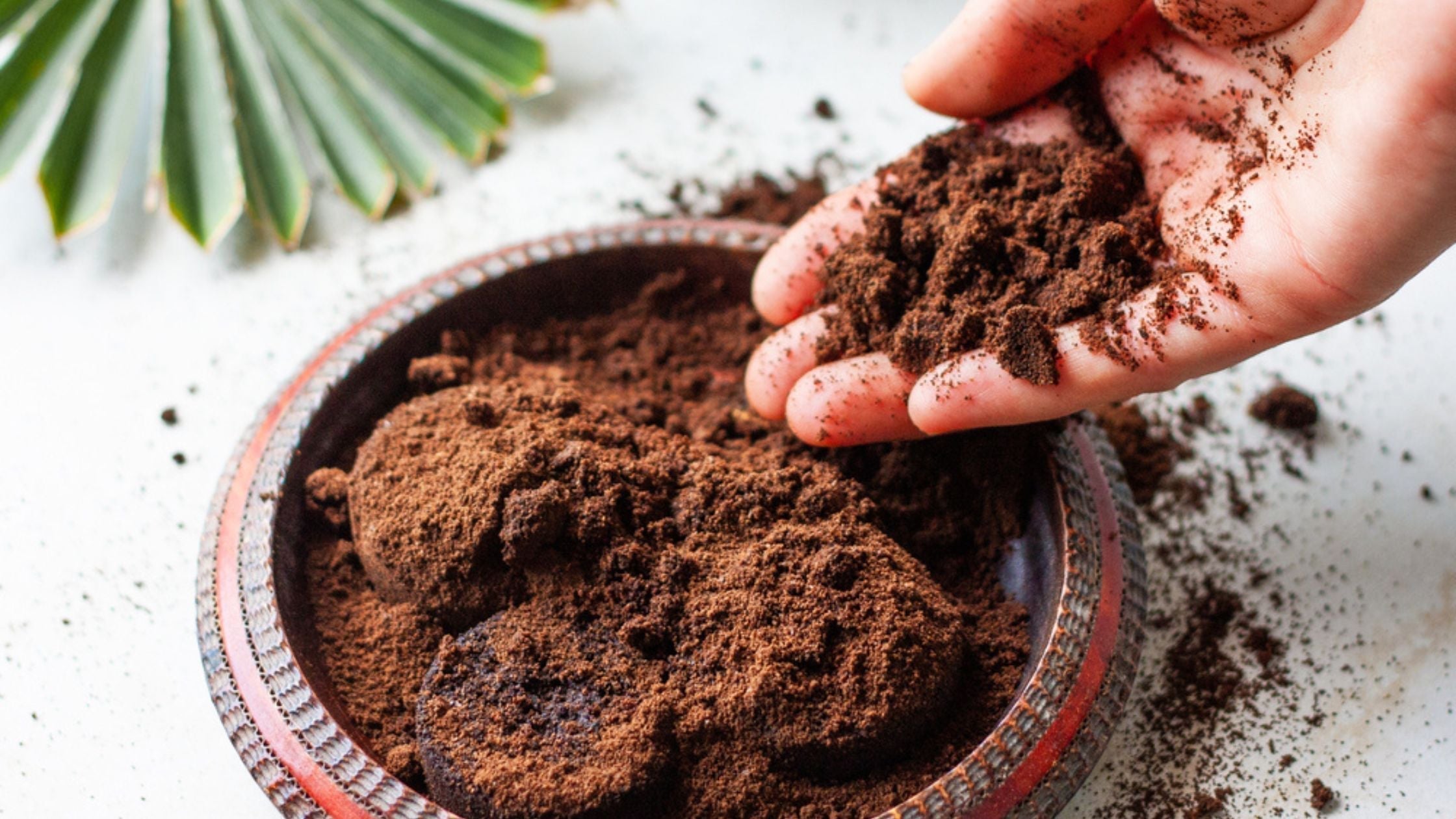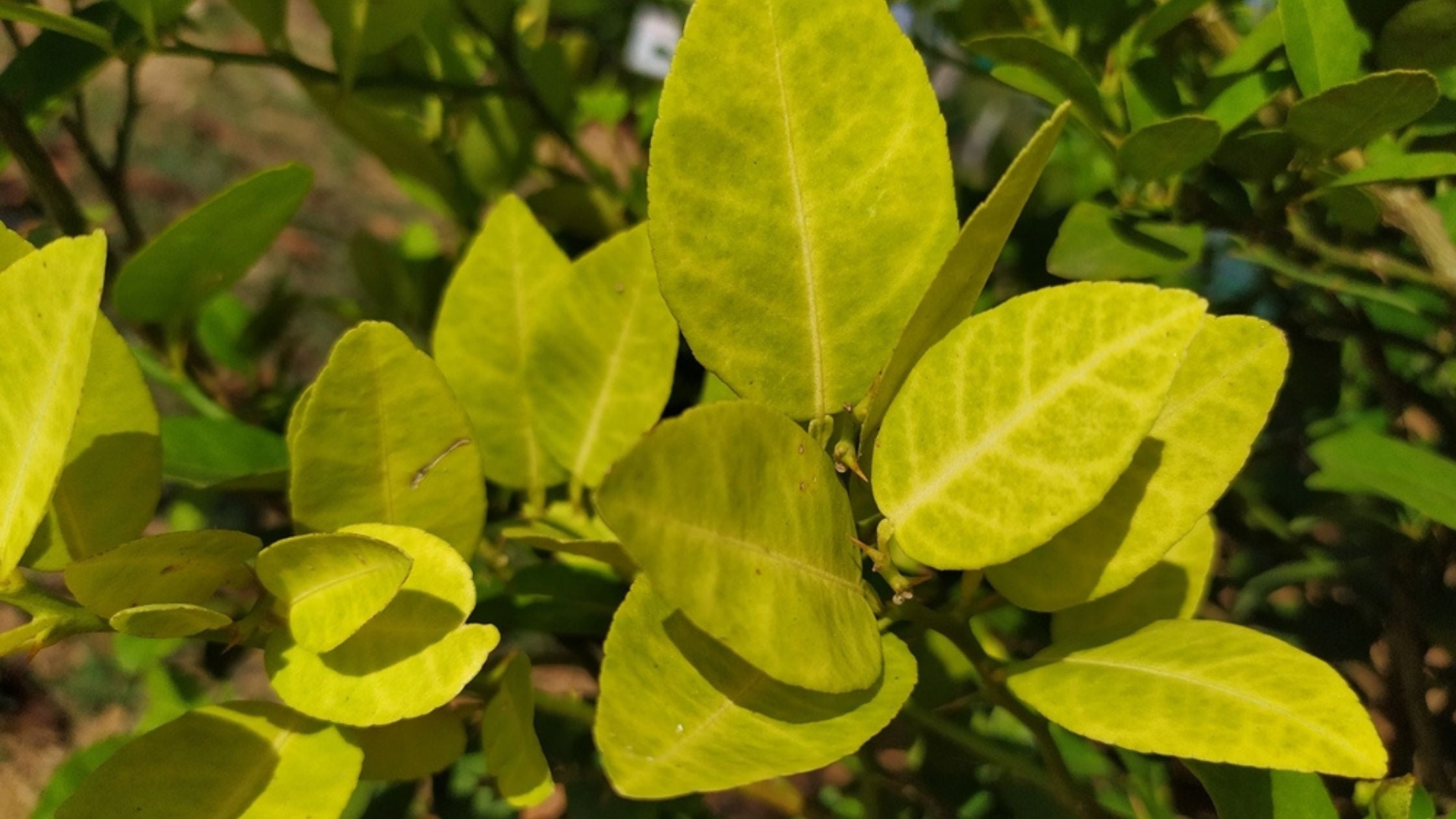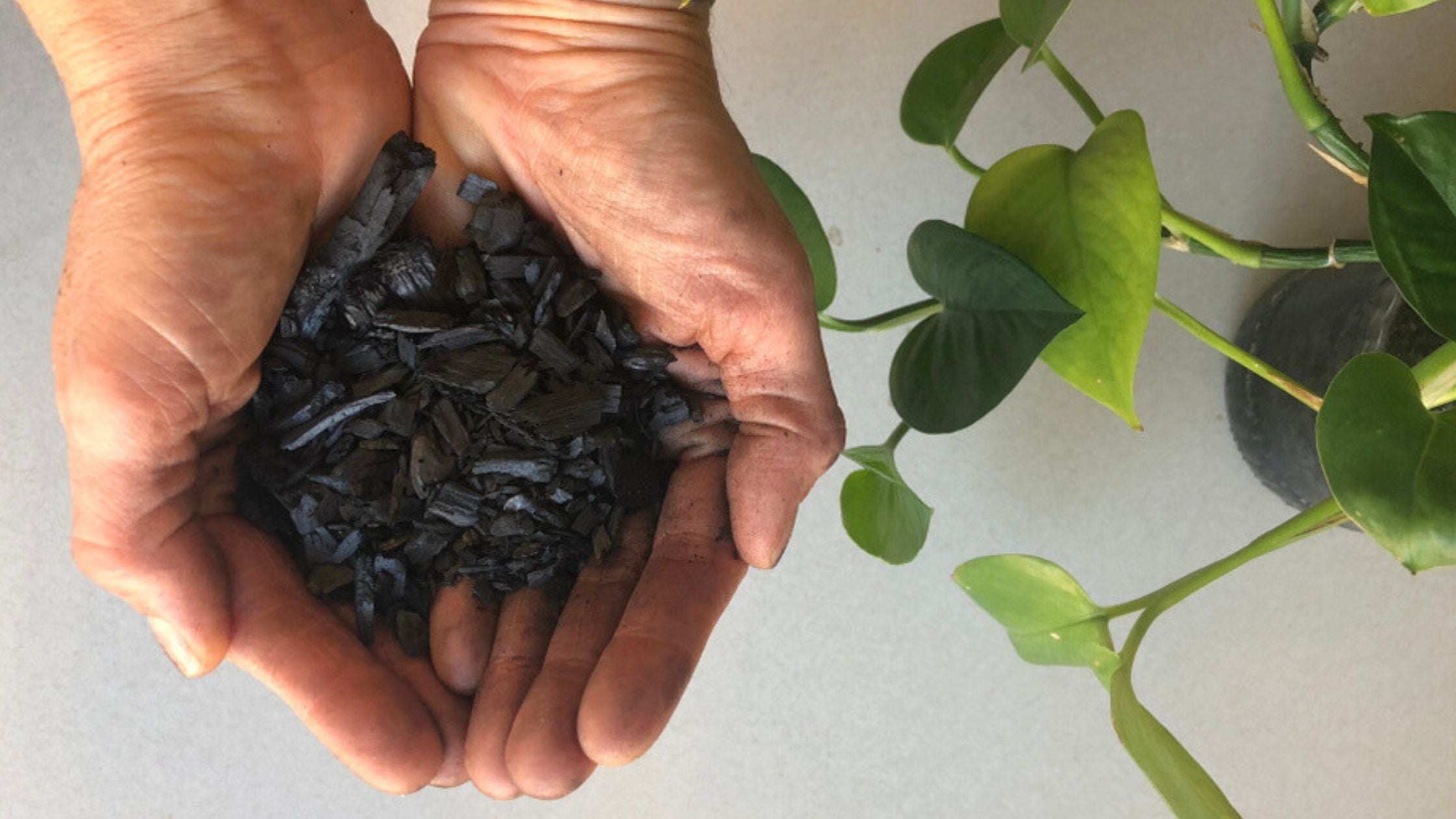
Homemade Nitrogen Fertilizer
This guide explains how to correct nitrogen deficiency in soil using natural nitrogen sources for plants. Nitrogen is the mineral a plant needs in the most significant amounts, and a healthy plant will contain three to four percent nitrogen in non-root tissues.
Scroll to the bottom for two simple homemade organic nitrogen fertilizer recipes - one with grass clippings and urine and the other with leftover coffee grounds.
Why organic nitrogen fertilizer is important
Long before the scientific discovery of the element nitrogen and its role in plant nutrition, farmers noticed that planting legume crops like clover made soil fertile. Uniquely among plants, legumes produce their own nitrogen and replenish the soil's nitrogen content. This is thanks to a bacteria (Rhizobiaceae, α-Proteobacteria) in legume roots.
Although nitrogen gas makes up 80 percent of the earth's atmosphere, man-made nitrogen was rare before the beginning of the 19th century. This was until the invention of the Haber-Bosch process in the early 20th century - a method to obtain nitrogen from the air.
Cheap synthetic nitrogen fueled the 20th-century revolution in global food production, creating a massive ecological crisis. Synthetic nitrogen run-off from agricultural land into the wider environment constitutes a significant pollution problem.
Homemade, organic fertilizer recipes tend to contain less concentrated amounts of the target nutrients than commercial, chemically synthesized ones. The lower potent concentration reduces the chance of damaging plants by over-fertilizing. They are also more environmentally sound because they have less chance of releasing excess fertilizer into the wild.
Instead of synthetic nitrogen fertilizer, opt for organic alternatives. You can also make your organic version at home. Opting nitrogen from organic sources means you won't introduce surplus nitrogen into the ecosystem, and you'll be protecting and nurturing your plants at the same time.
What is in commercial plant fertilizers?
All plant fertilizers contain nitrogen, phosphorus, and potassium. These are the macronutrients, the elements found in the most abundant quantities in plants. Different types of fertilizer contain these macronutrients in different amounts and ratios.
- Nitrogen (N) is crucial for vibrant foliage and stems, contributing to chlorophyll synthesis for optimal plant coloration and photosynthesis. Home gardeners frequently utilize nitrogen-rich fertilizers for their houseplants.
- Phosphorus (P) is essential for strong plant structure, promoting the growth of flowers, fruits, and root systems. When plants exhibit overall poor development or display dark or purpled leaves, phosphorus supplementation may be necessary.
- Potassium (K) maintains root health and supports flower and fruit development. It enhances plants' resilience to stress, including drought. Plants with abundant blooms, like orchids, benefit from potassium before and throughout their flowering stage.
While plants also require thirteen other elements in smaller quantities to carry out essential physiological maintenance and achieve growth, these micronutrients are usually found in sufficient quantities within the soil. Plants need all three macronutrients and thirteen micronutrients.
What are nitrogen-rich fertilizers?
Nitrogen-rich fertilizers contain a higher nitrogen ratio than the two other macronutrients (phosphorus and potassium). You can identify commercial brands of nitrogen-rich fertilizers by looking for nutrient ratios like 10-5-5, which means that the macronutrient content is two parts nitrogen to one part phosphorus and one part potassium.
Learn more about fertilizer NPK and NPK ratios in this guide.
When to use nitrogen fertilizer
Because nitrogen builds amino acids, they are important in developing cell membranes and chlorophyll, essential for photosynthesis. Houseplant collectors will find that nitrogen fertilizers are their plants' best friend for big, healthy leaves.
Like all fertilizers, nitrogen-rich fertilizers should only be used in the immediate lead-up to and during a plant's growth season. But when it comes to houseplants, this rule can be stretched when using a very gentle, natural nitrogen-dominant fertilizer on plants that get optimal light, warmth, and water. That's because the indoor conditions mimic a year-round growing season of tropical plants.
In vegetable gardens, nitrogen benefits leafy vegetables like kale, lettuce, and spinach in their growth season. Beets, brussels sprouts, broccoli, cabbage, and cauliflower also need high nitrogen levels. Underground veggies and legumes (such as carrots, fava beans, peas, radishes, parsnips, and turnips) do not need nitrogen supplementation.
Signs of nitrogen deficiency in plants
Nitrogen deficiency restricts plant organ growth, affecting roots, stems, leaves, flowers, fruits, and seeds.
Chlorophyll gives plants their green color, so nitrogen deficiency turns leaves pale. If the plant is deprived of nitrogen as it grows, the lower leaves on the stem will become pale. This is because nitrogen reserves from the base of the plant will be transported to younger leaves at the very top if their nitrogen levels are low.
Homemade nitrogen fertilizer recipe #1: Urea and grass
Both of these recipes will produce fertilizers high in nitrogen with little of the two other macronutrients - phosphorus and potassium. Use only when the soil is deficient in nitrogen.
This is the easiest fertilizer to make at home - both ingredients are readily available: grass and urine! Urine is an overlooked nutrient source that is too often wasted. Grass clippings are a good source of nitrogen, with an NPK ratio of 4:2:1 (4 % nitrogen, 2 % potassium, 1 % phosphorus).
What you need:
- One 5-gallon bucket
- Grass clippings to loosely fill bucket
- 1/4 cup Epsom Salt
- 2 cups urine
- water
How to make homemade nitrogen fertilizer recipe #1:
- Fill a 5-gallon bucket with grass clippings
- Cover grass clippings with water and leave for three days
- Mix 1/4 cup of Epsom salt with two cups of urine
- Add the Epsom salt/urine mixture to the steeped grass clippings
- Strain the liquid and dilute it by half with water
- Pour into a bottle, and it's ready to apply to the soil
Recipe for homemade nitrogen fertilizer #2: Coffee grounds
If using urine for your homemade nitrogen fertilizer feels out of your comfort zone, this recipe may be less intimidating and better smelling, and it still uses natural waste - coffee grounds.
For plants that like a lower acid content, use decaffeinated coffee grounds.
What you need:
- 2 cups coffee grounds
- 5 gallons water
- Spray bottle
How to make homemade nitrogen fertilizer recipe #2:
- Add two cups of used coffee grounds to 5 gallons of water
- Leave overnight
- Strain the liquid into a bottle, and add to the soil or spray directly onto your plant's leaves
If you would like to experiment with your own organic fertilizer recipes, here's a helpful guide for NPK ratios in many organic materials. You can use it to figure out which ingredients you need to create a perfect NPK ratio mixture for your plant.
P.S. Live in an apartment and want to grow veggies? Check out this article.



9 comments
Never used it myself but check out what’s in ground table pepper from peppercorns. I don’t know what the difference between the gray and black pepper is regarding nutrients but the gray ones are the immature black ones I’m told. Tons of micro nutrients available there, have never used it for fertilizer myself though. There are sources of nutrients all around you potash is called pot ash for a reason.
Also rotating your crops with Nitrogen fixing beans and especially spring crops like peas Will help prep your soil for your summer crop. It all depends where you live and how long the growing season is in southern Massachusetts you can get a crop of peas in and then a summer crop like tomato if you start growing the tomato very early indoors like around February so the plants are almost fully grown when they go into the garden. Also when they are this big you can dig extremely deep holes about a foot and a half or even 2 feet deepAnd just bury the tomato plant and it will grow Side roots and become a giant root. Whether this is a smart thing to do or not depends on how long of a growing season you have for it to continue growing. You’ll definitely get lots of tomatoes if you have time.
Also for your new gardeners blueberries and potatoes require more acidic soil than most crops so if you’re having a hard time with these this might be a problem.
Sean
1 part urine to 19 water= Nitrogen fertilizer.
Take a guess what happens if you add a teaspoon of clean wood ash 5 gallons of this?
Take some find screen like window screen or cheese cloth and wrap about a pound ofcom posted deciduous tree leaves into a 5 gallon bucket of water and let it sit for three days.
I’m willing to guess this will give you all your micro nutrients. Then discard the old compost and leaves into the soil
Sean
From many articles I have read I believe that using urine has been a practice for centuries especially in countries such as india. India also use cow dung aka cow manure. The cow dung ash is used to alkaline water and then used to water the plants. Like everything else, everything in moderation.
For my small patio garden i would probably use 1 cup urine to five gallons of water. I would think grass clippings alone would be surfice, but I am not an expert although i do ok living in the city!
Maia
How often can this be applied? Thank you for your article!
Linda
I don’t want to p**s on the party here, but a KEY thing to mention that has been sorely missed is to use MALE animal or human urine. Female urine is far too acidic and will at least burn, if not kill off plants and crops – massive right now, considering planned global food shortages and dependency on centralized systems that do not have YOUR best interests at heart! Thank me later. :-)
———
Southside Plants replied:
While Female urine can be a little more acidic than male urine they are both only slightly acidic. It isn’t enough to burn plants.
superbladesi
thank you, a very interesting article, would putting urine in the composter, improve the mix.
Mr David McQueen
what type of urine. is it animal or human.
———
Southside Plants replied:
Animal or human urine will work. Human might be easier to capture!
Dione Douse
Helpful article! However, in your recipe number 1 you do not indicate when or how to mix the urine and Epsom salts with the grass clippings and water.
CINDY
I am wondering if this statement is correct or possibly a typo? “Nitrogen-rich fertilizers contain a higher ratio of phosphorus compared to the two other macronutrients (phosphorus and potassium)” Wouldn’t the nitrogen rich fertilizer contain a higher ratio of nitrogen not phosphorus? Tending to plants is a very new thing for me so it could be that I am incorrect. Either way, thanks for the great informative article!
Jacqueline
Leave a comment
This site is protected by hCaptcha and the hCaptcha Privacy Policy and Terms of Service apply.